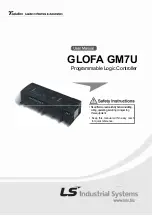
26-3
Seiko Epson Corporation
S1C31D50 TECHNICAL MANUAL
(Rev. 1.00)
Appendix B
Mounting Precautions
This section describes various precautions for circuit board design and IC mounting.
OSC1/OSC3 oscillator circuit
•
Oscillation characteristics depend on factors such as components used (resonator, C
G
, C
D
) and
circuit board patterns. In particular, with crystal resonators, select the appropriate capacitors
(C
G
, C
D
) only after fully evaluating components actually mounted on the circuit board.
•
Oscillator clock disturbances caused by noise may cause malfunctions. To prevent such
disturbances, con- sider the following points.
(1)
Components such as a resonator, resistors, and capacitors connected to the OSC1 (OSC3) and
OSC2 (OSC4) pins should have the shortest connections possible.
(2)
Wherever possible, avoid locating digital signal lines within 3 mm of the OSC1 (OSC3) and
OSC2 (OSC4) pins or related circuit components and wiring. Rapidly-switching signals, in
particular, should be kept at a distance from these components. Since the spacing between
layers of multi-layer printed circuit boards is a mere 0.1 mm to 0.2 mm, the above precautions
also apply when positioning digital signal lines on other layers. Never place digital signal lines
alongside such components or wiring, even if more than 3 mm distance or located on other
layers. Avoid crossing wires.
(3)
Use V
SS
to shield the OSC1 (OSC3) and OSC2 (OSC4) pins and related wiring (including wiring
for adjacent circuit board layers). Layers wired should be adequately shielded as shown to the
right. Fully ground adjacent layers, where possible. At minimum, shield the area at least 5 mm
around the above pins and wiring. Even after implementing these precautions, avoid
configuring digital signal lines in parallel, as described in (2) above. Avoid crossing even on
discrete layers, except for lines carrying signals with low switching frequencies.
(4)
After implementing these precautions, check the FOUT pin output clock waveform by running
the actual application program within the product. For the OSC1 waveform, enlarge the areas
before and after the clock rising and falling edges and take special care to confirm that the
regions approximately 100 ns to either side are free of clock or spiking noise. For the OSC3
waveform, confirm that the frequency is as designed, is free of noise, and has minimal jitter.
Failure to observe precautions (1) to (3) adequately may lead to noise in OSC1CLK and jitter in
OSC3CLK. Noise in the OSC1CLK will destabilize timers that use OSC1CLK as well as CPU Core
operations. Jitter in the OSC3 output will reduce operating frequencies.
OSC1
OSC2
V
SS
Sample VSS pattern (OSC1)
Summary of Contents for S1C31D50
Page 461: ...25 1 Seiko Epson Corporation S1C31D50 TECHNICAL MANUAL Rev 1 00 25 Package TQFP12 48PIN ...
Page 462: ...25 2 Seiko Epson Corporation S1C31D50 TECHNICAL MANUAL Rev 1 00 QFP13 64PIN ...
Page 463: ...25 3 Seiko Epson Corporation S1C31D50 TECHNICAL MANUAL Rev 1 00 TQFP14 80PIN ...
Page 464: ...25 4 Seiko Epson Corporation S1C31D50 TECHNICAL MANUAL Rev 1 00 QFP15 100PIN ...






































